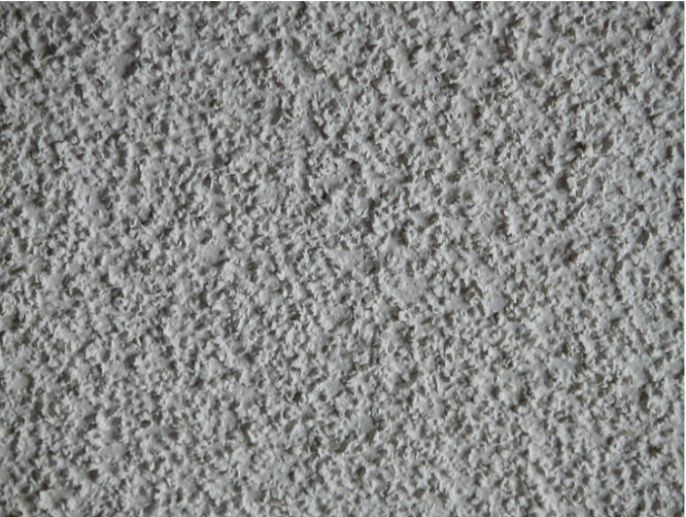I still remember the day my husband decided—without warning—that he was going to “modernize” our hallway with a ceiling refresh. One ladder, a paint scraper, and five minutes in, I heard him yell, “Wait… do all popcorn ceilings have asbestos?”
That’s the kind of DIY panic that’ll make your heart skip a beat. Especially if your home was built before 1980, like ours. Suddenly, what started as a simple update turned into a serious safety conversation. As someone who’s spent over a decade navigating OSHA compliance and workplace safety, I knew better than to ignore it. So, we hit pause—and did some real digging.
Here’s what I learned, what you should know, and how to keep yourself safe if that bumpy old ceiling starts calling your name.
What Is Asbestos, and Why Was It in Popcorn Ceilings?
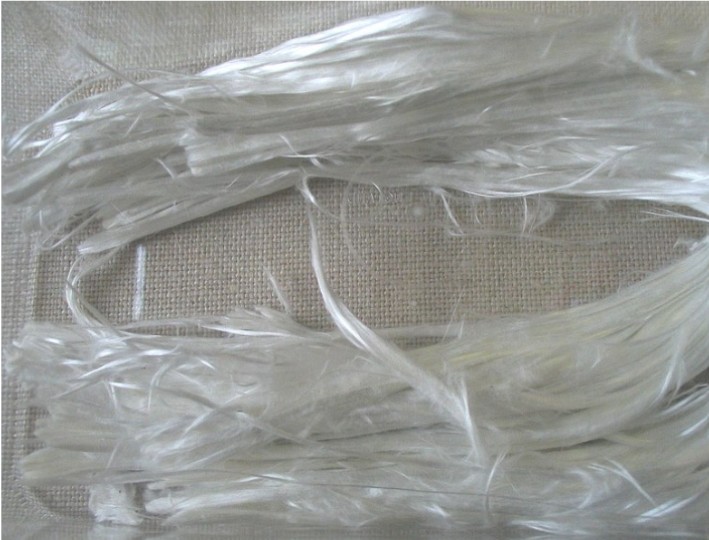
Image source- Wikipedia
Asbestos isn’t some mythical house villain—it’s a mineral that was once hailed for its fire-resistant and insulating properties. Starting in the 1950s, it was commonly used in ceiling textures (yes, including that iconic popcorn style) because it made buildings safer and more energy-efficient.
Back then, popcorn ceilings were a cheap, quick fix for builders. They hid imperfections, dampened sound, and required very little finesse. Unfortunately, many of those textured finishes included asbestos—especially if installed before the late 1970s.
And although asbestos use in ceilings started phasing out in 1977 (thanks to the U.S. Consumer Product Safety Commission’s restrictions), some builders continued using stockpiles well into the 1980s… and even into the early ’90s in rare cases.
So, Do All Popcorn Ceilings Have Asbestos?
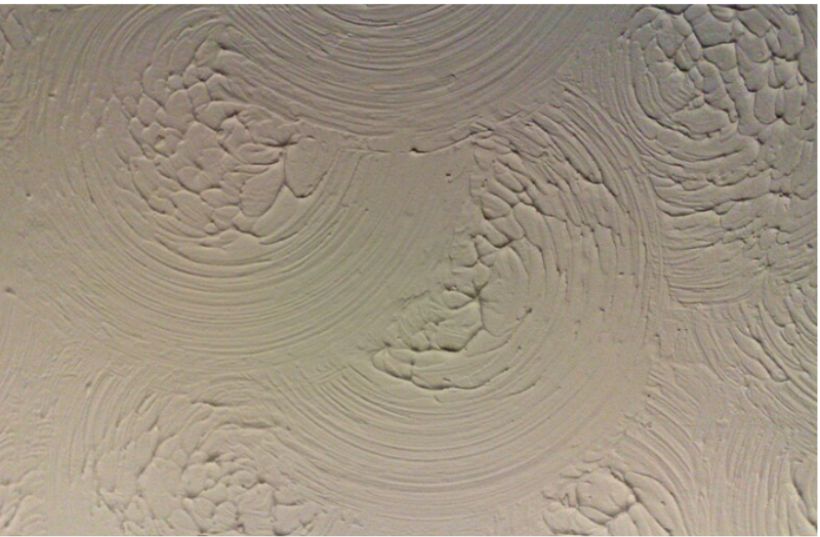
Image source- Wikipedia
Nope—but you can’t rule it out just by looking.
If your home was built after 1990, you’re probably safe. But homes built before 1980 have a higher risk of containing asbestos in ceiling texture, especially if the popcorn ceiling hasn’t been touched since construction.
Some popcorn ceilings from that era were made with alternative materials, but unfortunately, there’s no way to tell visually.
Asbestos fibers are microscopic—they don’t glow, shimmer, or smell suspicious. Which means unless you have superhuman vision (spoiler alert: you don’t), you’ll need to get it tested to be 100% certain.
Also Read: When Was Asbestos Banned in California?
What Makes Asbestos in Popcorn Ceilings Dangerous?
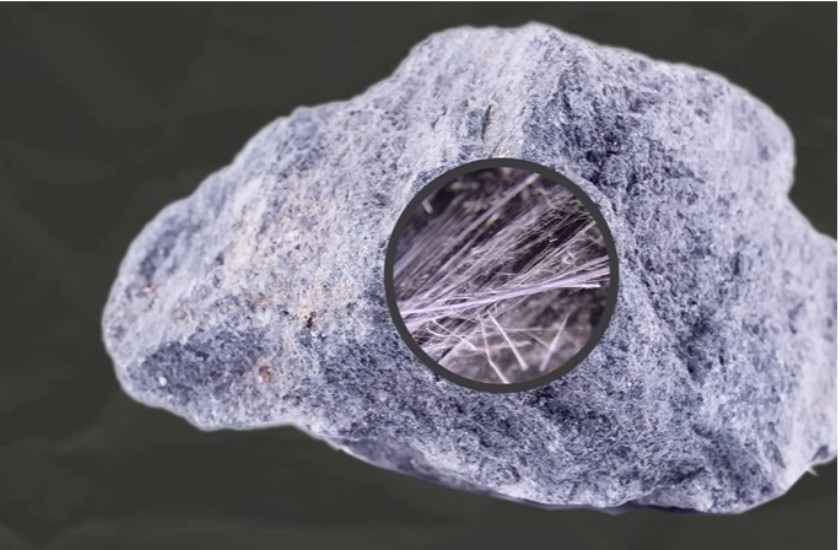
Image source- Insider Science
The danger of asbestos isn’t in having it—it’s in disturbing it.
If the popcorn ceiling is intact and in good shape, it’s not releasing fibers into the air. The problem comes when you start scraping, cutting, sanding, or doing any kind of demolition.
That’s when asbestos particles can become airborne and enter your lungs. And once they’re in, they’re not getting out.
Exposure to airborne asbestos can lead to serious health issues, including asbestosis, lung cancer, and mesothelioma.
The worst part?
These diseases often don’t show up until decades later. It’s the kind of risk that’s easy to ignore… until it’s too late.
So yes, your ceiling might look harmless, but if it contains asbestos and you disturb it, it becomes a silent hazard.
How Can You Tell If Your Popcorn Ceiling Has Asbestos?
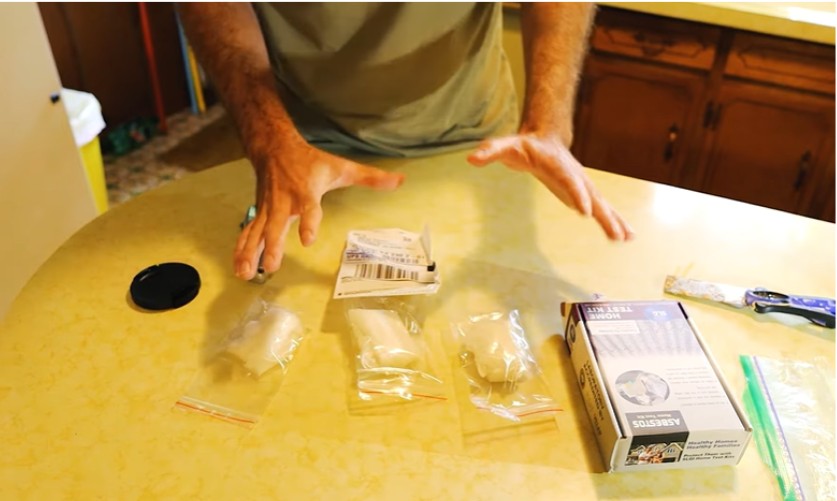
Image source- Kelly Concepts
Here’s the truth: you can’t tell just by looking. I don’t care if it’s gray, white, lumpy, shiny, dull, or crumbly—none of that guarantees anything. The only definitive way to know is to test a sample.
You’ve got two options:
- DIY Test Kits: You can buy a kit online or from a hardware store. They usually involve taking a small ceiling sample (carefully!), sealing it in a bag, and mailing it to a lab.
- Hire a Professional: This is the safest route. A certified asbestos inspector will follow strict safety protocols to collect and test the sample properly.
In my case, we went with the pro. It cost a little more, but peace of mind is priceless—especially with kids and pets around.
What Should You Do If Your Ceiling Has Asbestos?
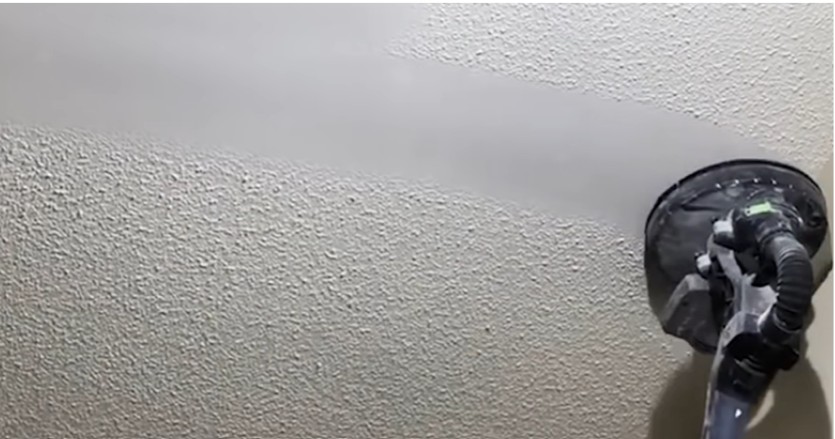
Image source- Insider Science
First, don’t panic. If the ceiling is undamaged, you may not need to do anything at all.
Here are your options:
- Leave It Alone: If the popcorn texture is in good condition and you don’t plan to mess with it, the safest move is… doing nothing. Just don’t poke it.
- Encapsulation: This involves sealing the asbestos material under a protective coating or drywall to prevent any fiber release.
- Professional Removal: If the ceiling is deteriorating or you’re renovating, asbestos abatement is the way to go. Just don’t try this yourself. You need a licensed contractor with proper training and equipment.
Whatever you do, never dry scrape a popcorn ceiling without knowing what you’re dealing with. That’s not just risky—it’s reckless.
How Do You Safely Handle a Popcorn Ceiling Renovation?
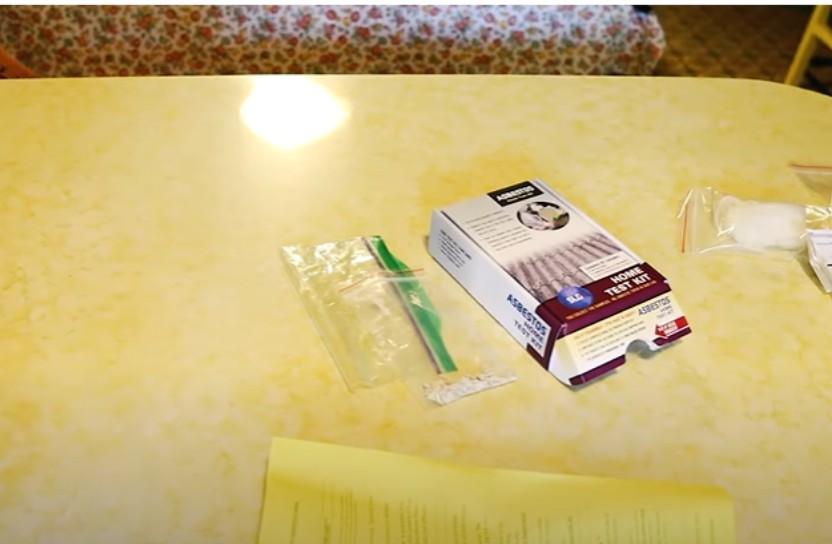
Image source- Kelly Concepts
Planning a ceiling makeover? Here’s how to do it safely and smartly:
1. Check Your Home’s Build Date: If it’s pre-1980, assume the popcorn ceiling might contain asbestos.
2. Test Before Touching: Whether through a DIY kit or a professional, get that sample tested before starting any work.
3. Get Expert Help: If the results come back positive, work with licensed asbestos professionals for removal or encapsulation.
4. Budget for Safety: Asbestos abatement isn’t cheap, but it’s way more affordable than long-term health risks or lawsuits.
5. Inform Future Buyers: If you’re selling your home, having documentation about asbestos presence—or lack thereof—can be a helpful selling point.
FAQ: Popcorn Ceiling Asbestos Confusion, Cleared Up
1. Can I tell if my popcorn ceiling has asbestos just by looking at it?
Not at all. Asbestos fibers are too small to see with the naked eye, and ceiling textures vary wildly. You need lab testing to be sure—anything else is just guessing.
2. Is it dangerous to live with a popcorn ceiling that contains asbestos?
Not if it’s intact and undisturbed. The real risk is in scraping, cutting, or damaging it, which can release fibers into the air. If it’s in good shape, leaving it alone is usually the safest option.
3. How much does asbestos ceiling testing cost?
DIY kits range from $30–$50, while professional sampling and lab testing might run $200–$400 depending on your location. Remember, professional testing often includes a full report and expert advice on next steps.
4. Can I remove a popcorn ceiling with asbestos myself?
Nope. In most U.S. states, it’s illegal for unlicensed individuals to remove asbestos-containing material. Even if it’s not, it’s extremely dangerous without proper containment and gear. Always hire licensed pros for removal.
Ceiling Secrets, Served with a Side of Safety
Here’s the deal: when it comes to the question do all popcorn ceilings have asbestos, the answer is no—but enough of them do that you shouldn’t take chances.
If you’ve got an older home and a textured ceiling that’s been begging for a refresh, do your homework first. One small test could save you a lifetime of regret.
And trust me—there’s nothing like enjoying a fresh coat of ceiling paint when you know you handled it the right way.
Stay safe out there, friend. Your ceiling may be dated, but your decisions don’t have to be.

